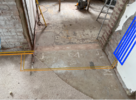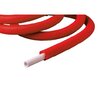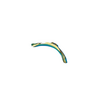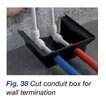Hi, need some help please.
I now need to bring central pipes across to other side of wall via route like the photo shows (the route allows sliding door gear fixed onto floor). This is a flat and the concrete floor is approx 25cm thick stone mix, I plan to chase down around 40mm so its not too deep to cause damage. I am deliberating if I should lay plastic or copper pipe.
I am leaning more towards hep2o system because plastic pipes are smaller than copper+insulation, so chase won't be too deep (less work), but this means the push fit elbow joints at each end will be buried under floor, and this doesn't sound right to me. Is there another way to bring out the pipe without bury push fit joint in concrete?
If push fit isn't advised, what is the smallest insulation I can used? is armaflex very thick?
Any other tips or guidances are much appreciate.



I now need to bring central pipes across to other side of wall via route like the photo shows (the route allows sliding door gear fixed onto floor). This is a flat and the concrete floor is approx 25cm thick stone mix, I plan to chase down around 40mm so its not too deep to cause damage. I am deliberating if I should lay plastic or copper pipe.
I am leaning more towards hep2o system because plastic pipes are smaller than copper+insulation, so chase won't be too deep (less work), but this means the push fit elbow joints at each end will be buried under floor, and this doesn't sound right to me. Is there another way to bring out the pipe without bury push fit joint in concrete?
If push fit isn't advised, what is the smallest insulation I can used? is armaflex very thick?
Any other tips or guidances are much appreciate.


Last edited:




